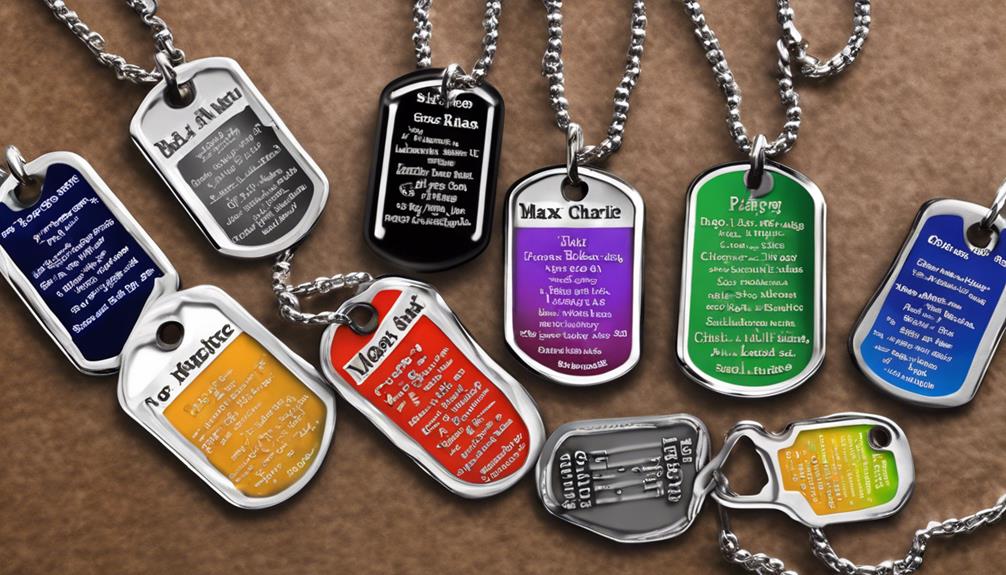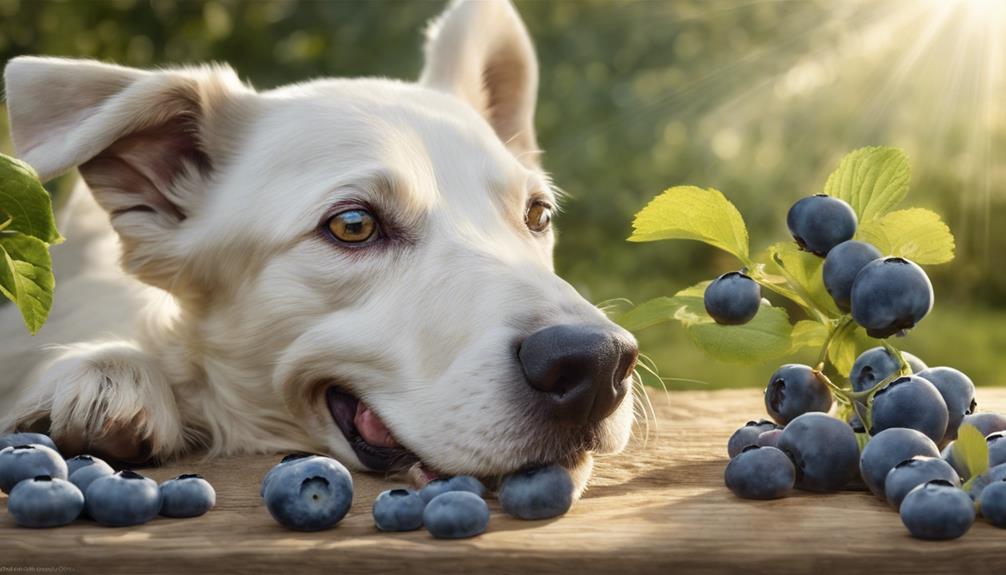Male dogs belong to the subspecies Canis lupus familiaris within the Canidae family, which includes wolves, foxes, and jackals. Understanding their scientific name elucidates their genetic lineage. Dogs share ancestry with grey wolves and were domesticated around 23,000 years ago. This taxonomic classification sheds light on their evolutionary history and kinship with wild canids. Further insights into their behavior, physical traits, reproductive biology, and ecological interactions provide a holistic view of male dogs. Exploring these facets deepens appreciation for the complex nature of man's best friend and their significance in various spheres.
Key Takeaways
- Scientific name of male dogs: Canis lupus familiaris.
- Canis lupus familiaris represents the domestic dog species.
- Dogs descended from the grey wolf, Canis lupus.
- Canis lupus familiaris denotes the domesticated form of the grey wolf.
- The scientific classification highlights the evolutionary relationship between dogs and wolves.
Taxonomic Classification
In our examination of the taxonomic classification of male dogs, we investigate their placement within the Canidae family and Carnivora order. Male dogs, scientifically known as Canis lupus familiaris, belong to the Canidae family, which includes other canines like wolves, foxes, and jackals. This familial connection underscores the evolutionary relationship shared among these animals. The Carnivora order encompasses various carnivorous mammals, highlighting the dietary habits and physical characteristics that male dogs possess.
Understanding the taxonomic classification of male dogs sheds light on their genetic lineage and evolutionary history. The scientific name Canis lupus familiaris signifies the subspecies of the grey wolf that has been domesticated, emphasizing the ancestral bond between these two creatures. By recognizing the placement of male dogs within the Canidae family and Carnivora order, we gain insight into their biological connections and evolutionary journey. This knowledge enriches our appreciation for the intricate relationships male dogs have within the animal kingdom.
Evolutionary History

Exploring the evolutionary history of male dogs reveals their fascinating journey from their wolf ancestors to becoming cherished companions of humans. Mitochondrial DNA studies indicate that domestic dogs, known scientifically as Canis lupus familiaris, descended from the grey wolf, Canis lupus.
Around 23,000 years ago in Siberia, dogs began their journey of domestication before spreading across the globe. This domestic dog clade, encompassing Canis familiaris and the dingo, shares a common ancestry with an ancient wolf population. Dogs likely started on a commensal pathway into domestication, where they interacted with early human populations, paving the way for a mutually beneficial relationship.
Remarkably, the dog was the first species to be domesticated, predating even the development of agriculture. This evolutionary process showcases the deep-rooted connection between humans and dogs, highlighting the remarkable bond that has flourished over millennia.
Behavioral Characteristics
Behavioral characteristics of male dogs manifest through their pack behavior, communication methods, territorial tendencies, and the essential role of socialization for their mental well-being and development. Dogs exhibit pack behavior, forming social hierarchies similar to wolves. Within a pack, each member has a specific rank, and this hierarchy influences their interactions and behaviors.
Communication is important among dogs, who use various sounds like barks, growls, and whines to express emotions and intentions. They're territorial animals, marking their spaces through scent marking and vocalizations to establish boundaries and convey ownership.
Socialization with humans and other dogs is critical for a dog's mental well-being and development, helping them learn appropriate behaviors and responses. Understanding a dog's body language and vocal cues can aid in interpreting their behavior and needs accurately, strengthening the bond between human and canine companions.
Physical Attributes

Male dogs typically exhibit physical attributes such as larger body size, heavier build, and more prominent musculature compared to their female counterparts. These differences in body size and musculature are often related to their roles in nature, where males historically needed to be stronger and more robust for activities like hunting and protecting their territory.
Noteworthy to mention, male dogs with thicker necks, broader heads, and stronger jaw muscles, which aid them in tasks like chewing and holding objects. Additionally, in certain breeds, male dogs may showcase more pronounced secondary sexual characteristics, such as larger chests or thicker fur, adding to their overall physical presence.
Bear in mind that the physical attributes of male dogs can vary greatly depending on the breed and individual characteristics, highlighting the diverse range of appearances within the canine world.
Reproductive Biology
In the domain of canine biology, the reproductive system of male dogs plays a pivotal role in the continuation of their species. Male dogs typically reach sexual maturity between 6 and 12 months of age. At this stage, their reproductive system, including the testes responsible for producing sperm, becomes fully functional. During mating, male dogs mount the female and transfer sperm through the penis to fertilize the female's eggs.
Unlike female dogs that go through a heat cycle, male dogs don't have such a cycle. Instead, they're ready for mating whenever a receptive female is in estrus. In the mating process, male dogs engage in a monogamous behavior where a male usually mates with a single female during her estrus period.
Understanding the intricacies of the male dog's reproductive system is essential for comprehending their role in the perpetuation of the species.
Ecological Interactions
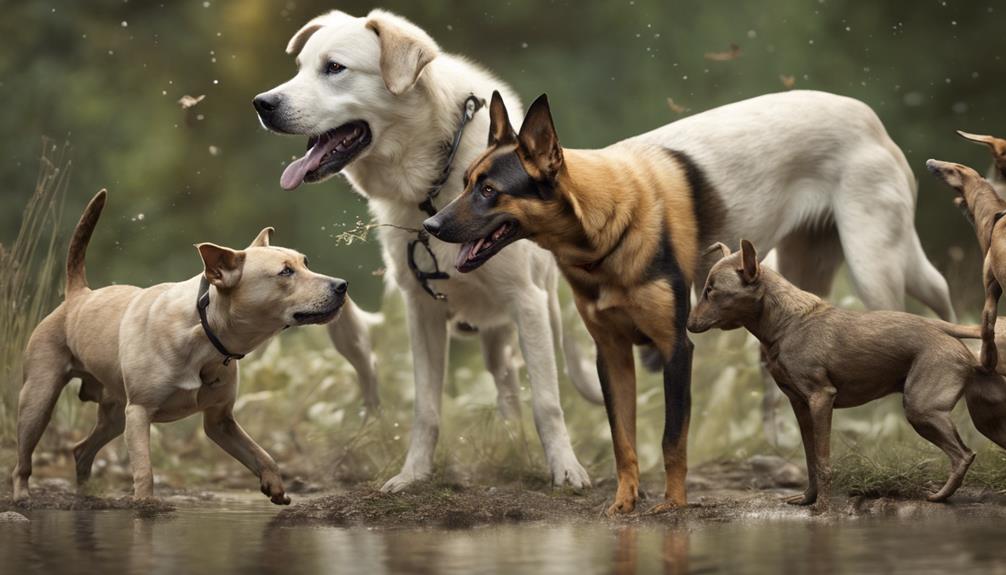
Ecological interactions among dogs encompass a range of behaviors that impact ecosystems and wildlife populations. In both domestic and wild settings, dogs engage in various ecological relationships, including predation, competition, and mutualism. Their predatory nature can influence local prey populations and community dynamics, affecting the balance of species in an ecosystem. Additionally, dogs may compete with native wildlife for essential resources like food and shelter, potentially disrupting the natural order.
On the other hand, dogs also exhibit mutualistic interactions, particularly with humans, which have played a significant role in their evolution and spread across different habitats. These mutualistic relationships have shaped the way dogs interact with their environment and have contributed to their success as a species. Understanding these ecological interactions is pivotal for managing the impact of dogs on native wildlife and ecosystems, ensuring the delicate balance of nature is maintained for the benefit of all species involved.
Human-Dog Relationships

Our relationship with dogs is characterized by mutual companionship, support, and shared activities. Dogs have been our faithful companions for over 12,000 years, coevolving alongside us and becoming integral parts of our lives. They serve various roles, from hunting and herding to protection and emotional support. Interacting with dogs has been shown to have numerous benefits for humans, such as reducing stress levels, increasing oxytocin, and improving overall well-being.
| Benefits of Human-Dog Relationships |
|---|
| Enhanced emotional well-being |
| Decreased stress levels |
| Increased oxytocin levels |
| Improved overall health |
| Companionship and support |
Studies have also demonstrated that dogs have a remarkable ability to understand human emotions and cues, earning them the title of 'man's best friend.' The bond we share with dogs goes beyond mere companionship; it is a deep connection built on trust, love, and mutual understanding.
Health Considerations
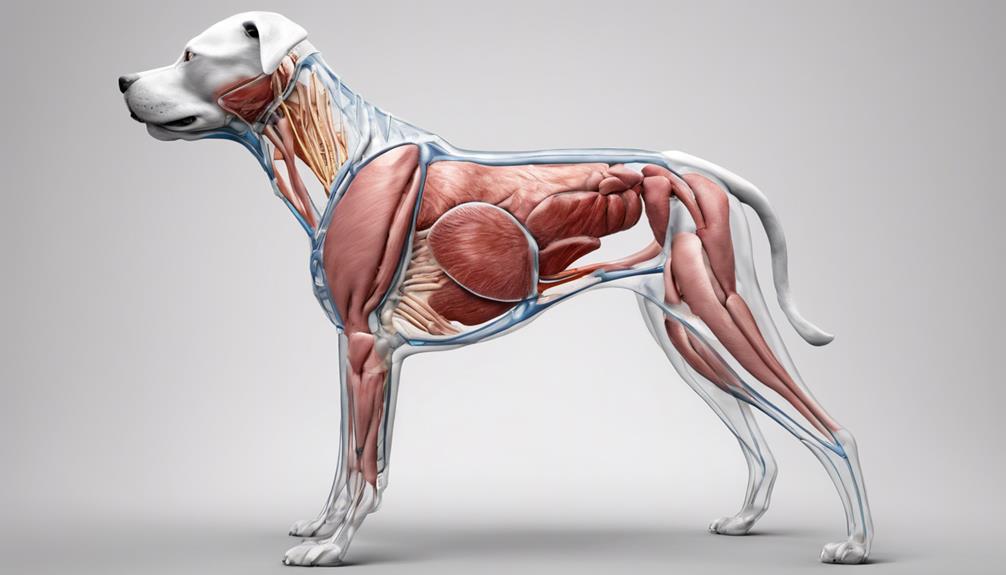
Regular vet check-ups are essential for keeping male dogs healthy and catching potential issues early.
Male dogs are susceptible to conditions like hip dysplasia, heart problems, and certain cancers.
Neutering can help prevent testicular cancer and reduce aggressive behavior and roaming tendencies.
Common Health Issues
When considering the health of male dogs, it is essential to be aware of common issues that can impact their well-being. Some of the prevalent health concerns include hip dysplasia, which affects their hip joint, making movement uncomfortable. Testicular tumors are also a risk for male dogs, highlighting the importance of neutering for their overall health. Prostate problems, such as prostatitis or benign prostatic hyperplasia, can arise, especially as they age. Additionally, urinary tract infections and heart conditions like dilated cardiomyopathy or heartworm disease are issues that require attention. Monitoring their health closely and seeking veterinary care when needed can help address these issues effectively.
| Common Health Issues | Description |
|---|---|
| Hip Dysplasia | Affects hip joint stability and function |
| Testicular Tumors | Neutering important for health |
| Prostate Issues | Prostatitis or benign prostatic hyperplasia |
| Urinary Tract Infections | Symptoms like frequent urination |
| Heart Conditions | Dilated cardiomyopathy or heartworm disease |
Preventive Care Tips
Moving on from the discussion of common health issues in male dogs, let's now focus on the importance of preventive care tips to maintain their overall well-being.
Providing a balanced diet rich in nutrients is essential to prevent health issues in male dogs. Regular exercise and mental stimulation play a significant role in keeping them physically and mentally healthy.
Dental care, such as teeth brushing and check-ups, is vital to avoid dental problems. Neutering or spaying male dogs not only helps prevent certain health issues but also contributes to population control.
Regular Vet Check-Ups
Ensuring male dogs receive consistent veterinary check-ups is essential for monitoring their overall health and promptly identifying any potential issues. These routine visits play an important role in keeping our furry companions healthy and happy.
During these check-ups, veterinarians will assess various aspects of your male dog's well-being, including weight, body condition, dental health, and skin/coat condition. Vaccinations, parasite control, and preventive measures like heartworm and flea/tick prevention are also key components of maintaining male dog health.
Additionally, annual blood tests may be recommended to screen for conditions such as heartworm disease, tick-borne illnesses, and organ function.
Cultural Significance
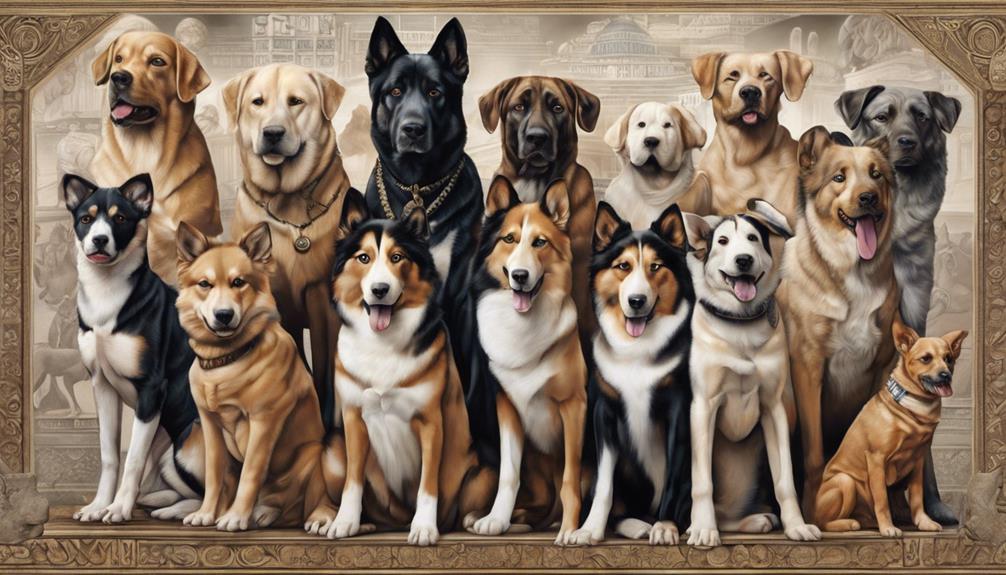
Dogs have played significant historical roles across cultures, from being revered as symbols of loyalty to featuring prominently in art and folklore.
In artistic representations, dogs often embody virtues like faithfulness, protection, and companionship, serving as potent symbols of human-animal bonds.
Folklore tales involving canines offer cultural insights into values such as courage, guidance, and unwavering loyalty that transcend time and place.
Historical Dog Roles
Throughout the annals of history, canine companions have left an indelible mark on numerous cultures, showcasing their diverse and vital roles. In various societies, dogs have been valued for their loyalty and skills, serving as integral members of the community. Here are three key historical roles of dogs:
- Serving as pack animals in hunting expeditions, aiding humans in tracking and capturing prey.
- Acting as guardians of homes and livestock, protecting them from potential threats.
- Providing companionship and emotional support to individuals, offering comfort in times of need.
These roles highlight the deep connection between humans and domesticated dogs, illustrating the varied cultural relationships that have developed over centuries.
Symbolism in Art
In exploring the significance of dogs in art, we uncover a rich tapestry of cultural symbols that have endured across diverse civilizations. Dogs have been revered for their unwavering loyalty, providing humans with protection and companionship through the ages.
This symbolism transcends mere artistic representation, delving into the fundamental values of various societies worldwide. Depicted in paintings, sculptures, and ceramics, dogs symbolize not only physical guardianship but also emotional support and steadfast allegiance.
The portrayal of dogs in art reflects the deep emotional bond between humans and these cherished animals, capturing the essence of their roles as faithful companions throughout history. This enduring depiction showcases the universal recognition of the profound connection between humans and dogs in the domains of creativity and culture.
Canine Folklore Tales
Imbued with timeless wisdom and enchanting narratives, canine folklore tales weave intricate tapestries of cultural significance that transcend generations.
In these mesmerizing stories, dogs are revered for their loyalty and portrayed as protectors, showcasing the deep bond between humans and their canine companions. Tales often depict dogs with supernatural abilities, such as talking, shape-shifting, and guiding lost souls, adding a mystical element to the folklore.
These narratives not only highlight the courage, loyalty, and intelligence of dogs but also emphasize their importance in human lives. Through myths, legends, and fables, dog folklore tales celebrate the enduring companionship between humans and these faithful creatures, enriching cultures worldwide.
Terminology and Nomenclature
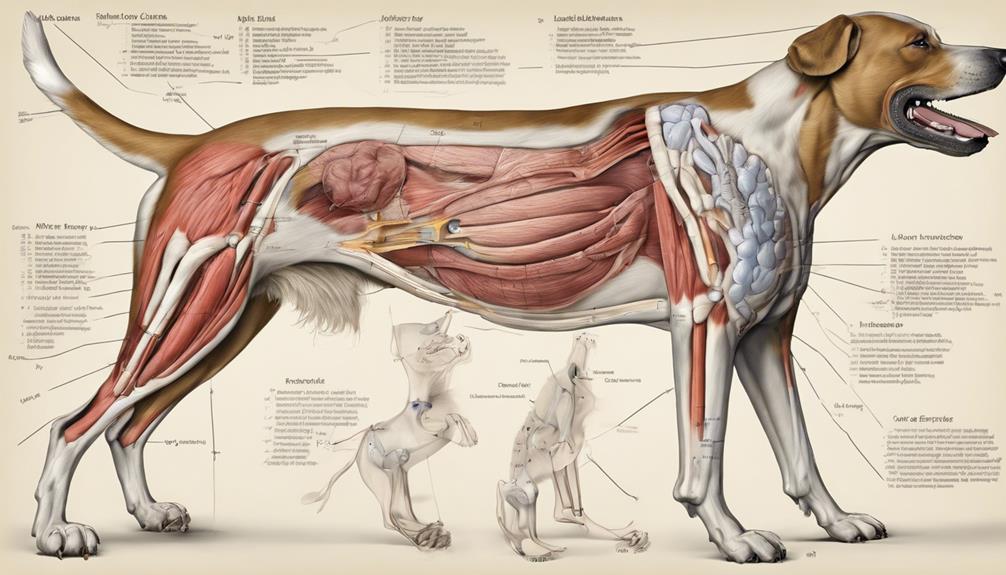
Highlighting the intricate terminology and nomenclature surrounding the scientific name of male dogs as Canis lupus familiaris underscores their evolutionary link to the grey wolf.
The designation Canis lupus familiaris serves as a specific epithet that sets male dogs apart from their wild counterparts, the grey wolf, emphasizing the unique relationship between these two canids.
This nomenclature not only distinguishes male dogs within the Canidae family but also highlights their shared ancestry with the ancient grey wolf species.
By using the term Canis lupus familiaris, scientists acknowledge the deep-rooted evolutionary history that male dogs have with their wolf ancestors, providing a taxonomic classification that reflects this intricate relationship.
Understanding the terminology and nomenclature associated with male dogs offers a glimpse into their evolutionary journey and the biological connections that have shaped these beloved companions.
Frequently Asked Questions
What Is the Scientific Name for Canis Familiaris?
We call it Canis lupus familiaris, highlighting its close kinship to the grey wolf. Carl Linnaeus recognized the domestic dog as Canis familiaris in 1758. Our furry friends share an evolutionary bond with their wild ancestors.
What Is the Scientific Name for a Male Dog?
Understanding the scientific name for a male dog. It's Canis Lupus Familiaris. This classification showcases the close bond between dogs and wolves. Understanding this helps us accurately identify male dogs in scientific discussions and engagements.
What Is the Scientific Name of the Companion Dog?
We call our furry friend the companion dog, scientifically known as Canis lupus familiaris. This name signifies their close link to grey wolves. Carl Linnaeus first designated this in 1758, reflecting the evolutionary connection between domestic dogs and their wild ancestors.
Why Does a Dog Have 3 Scientific Names?
Having three scientific names may seem puzzling, but it eloquently showcases the intricate ties between domestic dogs and grey wolves. The triple nomenclature sheds light on our genetic and evolutionary connections, enriching our understanding of canines.
Conclusion
To sum up, the scientific name of male dogs is Canis lupus familiaris. This classification highlights the close relationship between dogs and their ancestors, wolves.
Understanding the taxonomic classification, evolutionary history, behavioral characteristics, and physical attributes of male dogs can provide valuable insights into their unique biology and behavior.
By delving into the reproductive biology, human-dog relationships, health considerations, and cultural significance of male dogs, we can deepen our appreciation for these beloved companions.





